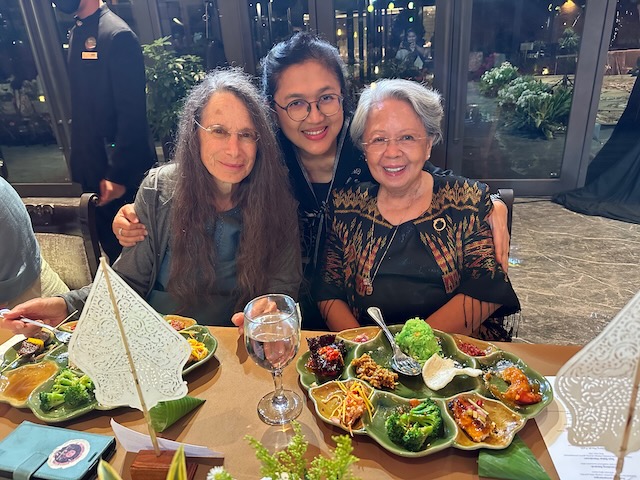East Kalimantan Day 7-9
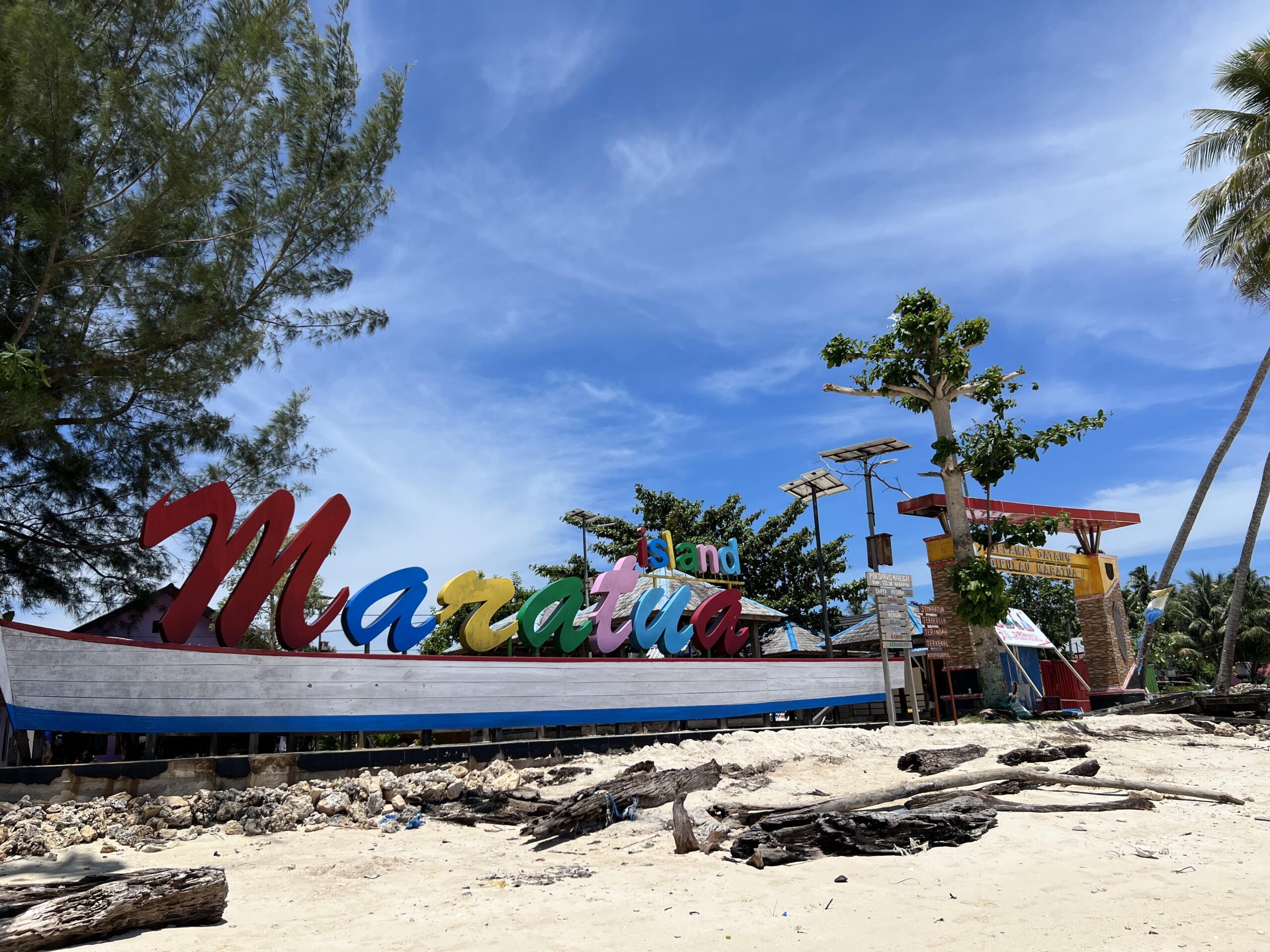
The last segment of our Kalimantan travels was further North East into the Derawan Archipelago, islands of clear water and optimal diving and snorkeling opportunities. Our destination was Maratua Island, the largest of the group with a few villages and a few resorts, very undeveloped and almost no foreign tourists.

But first, two notes about traveling around Kalimantan which probably extends to the rest of Indonesia as well: in the rural areas there are far more motorcycles than cars, and almost all of them carry 2-4 people, often with young children, all without helmets. Our guide says there is no regulation here that could be enforced. But the positive thing is that because of the no-alcohol policy, there are very few intoxicated drivers on the roads, of cars or motorcycles, which probably tilts the level of danger down a bit. Talking about safety, I will note that the entire male adult population seems to be addicted to cigarettes and there is quite a bit of resultant coughing. But no females as they are protected by their culture.
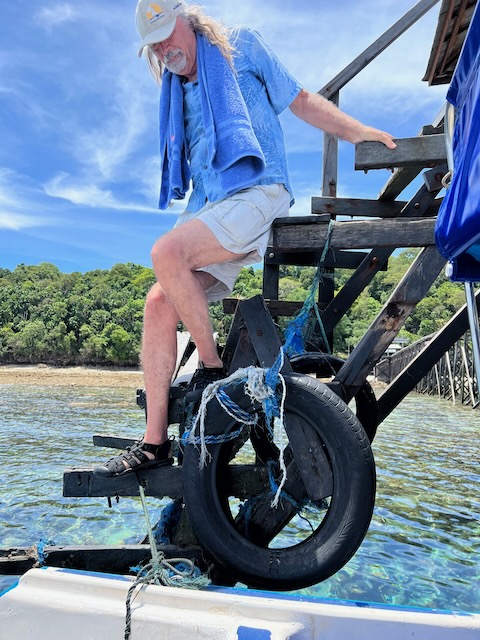
The other travel issue is that the toilets here are incredibly clean wherever we have gone. Especially the airports, which put our facilities to shame. In addition, fairly new well-maintained mosques are everywhere, in every rural area, and all of them have women’s and men’s bathrooms as water purification is an important part of their prayer ritual. This means that when traveling the countryside by car a tourist can always find an open clean toilet as with prayers 5 times a day, it seems like the mosques are always available. Toilets consist of the traditional “squat” style with porcelain/ceramic foot pedestals and a large container of water with a scoop nearby to wash and clean it after use. In addition, if there is running water, there is a spray nozzle for washing as toilet paper is not customary. But often there is also a western “throne” type toilet seat as well as customs and traditions are constantly changing with the times.
Back to our adventures. The journey to Maratua Island in the Derawan Archipelago was epic: we began with a short turbo-jet propeller flight from Samarinda to Berau which was delayed. By the time we arrived and were greeted by our new guide, an enthusiastic woman named Merry (a Christian), and taken out to a good lunch, it was about 3 pm. It was raining heavily when we finished eating and our drive was through mud-sloshed country roads for 2 hours as the grey skies opened up.
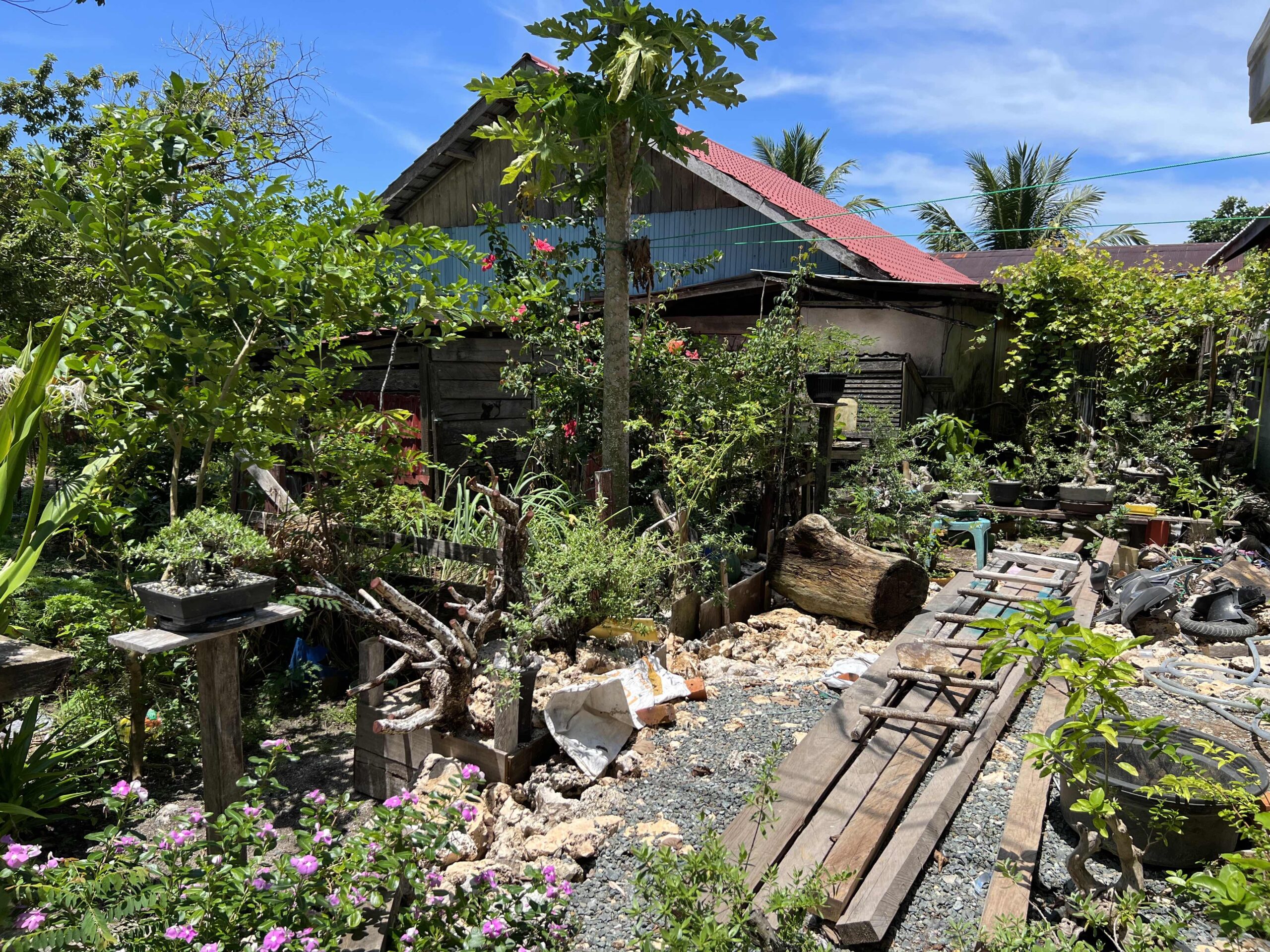
As it was now early evening and dusk was setting in, we were hurried to our private motor boat for our 2 hour ride to the island. Don’t think any slick humming machine. Imagine a very worn boat with two motors in the back where we had to sit spewing out heavy fumes around us and great noise throughout the trip so we could not speak to one another. And there were no working life preservers which Julie and I discovered when we reached to put them us as the waves from the rain storm made the water a little rough and we were concerned about being thrown out. Every ancient faded preserver had 1-2 broken buckles so were fairly useless. I question whether there was any safety equipment at all on board, including running lights, as it was getting pretty dark by the time we approached our destination.

But we made it and settled into our resort with a welcome dinner. This was a good place, clean, worn and comfortable, where Indonesian families came for a vacation but not luxury by most standards.
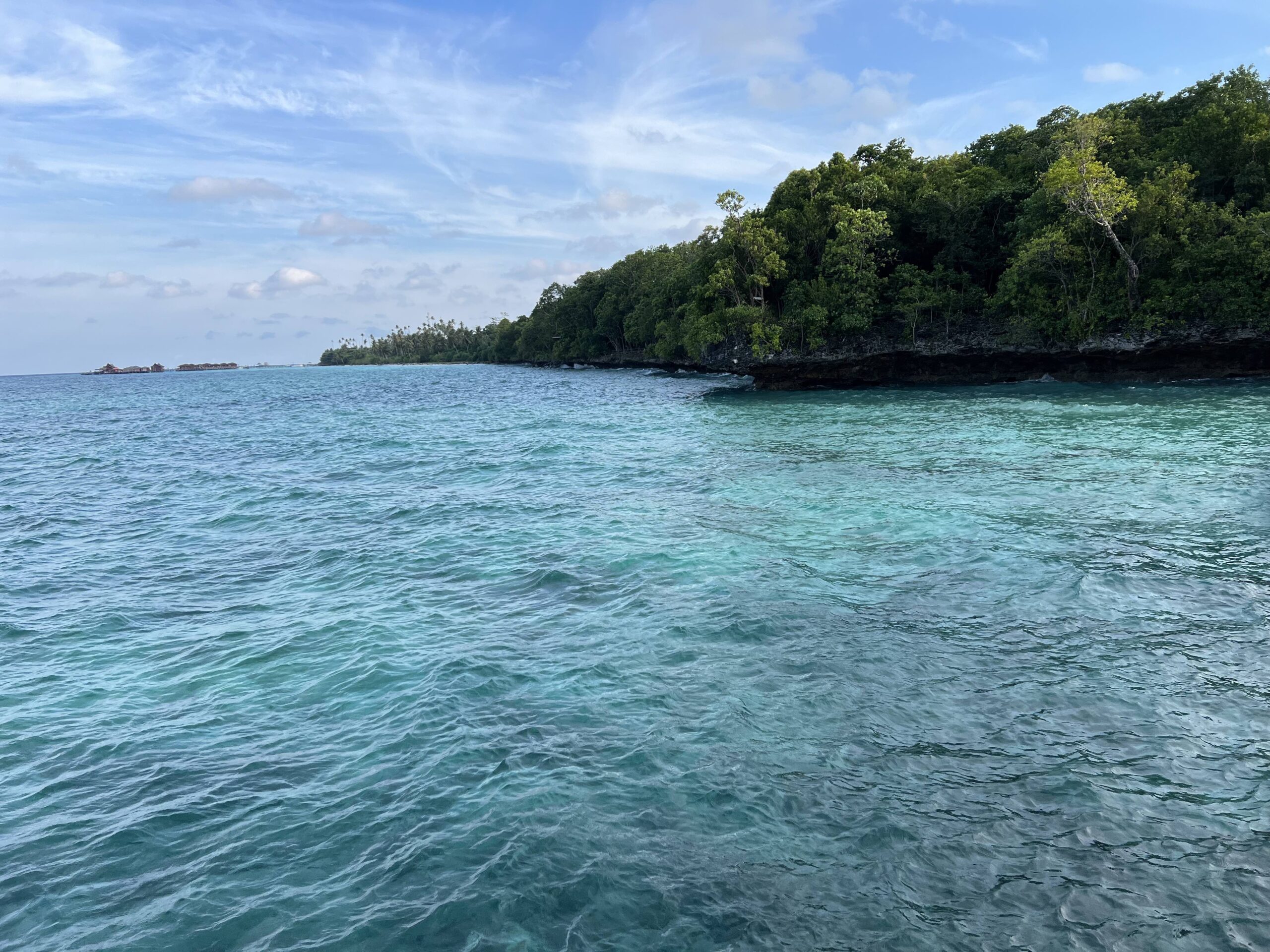
Our visits over the next two days included a car drive around the island, walking through several very small towns. Women sat on the porches of their homes, many places had small store fronts, and near the waterfront there were covered huts to rent and rest in with nearby fresh coconut sellers and small food stalls for visitors. A subdued quiet way of life. We spent time beach combing and found an amazing diverse and abundant collection of sea shells on the shore at low tide. It made me realize how picked clean our seashores are over the generations.
We stopped at a location known for its deep pool in a chasm with entrance through an underground cave. Julie and I were able to rent life jackets and join Jack in the cool waters. What this site is really known for is jumping off the side of the ravine down into the waters far away — we did not do this but we were joined by two young European guys, the only other tourists we met during our stay, who came for that experience.
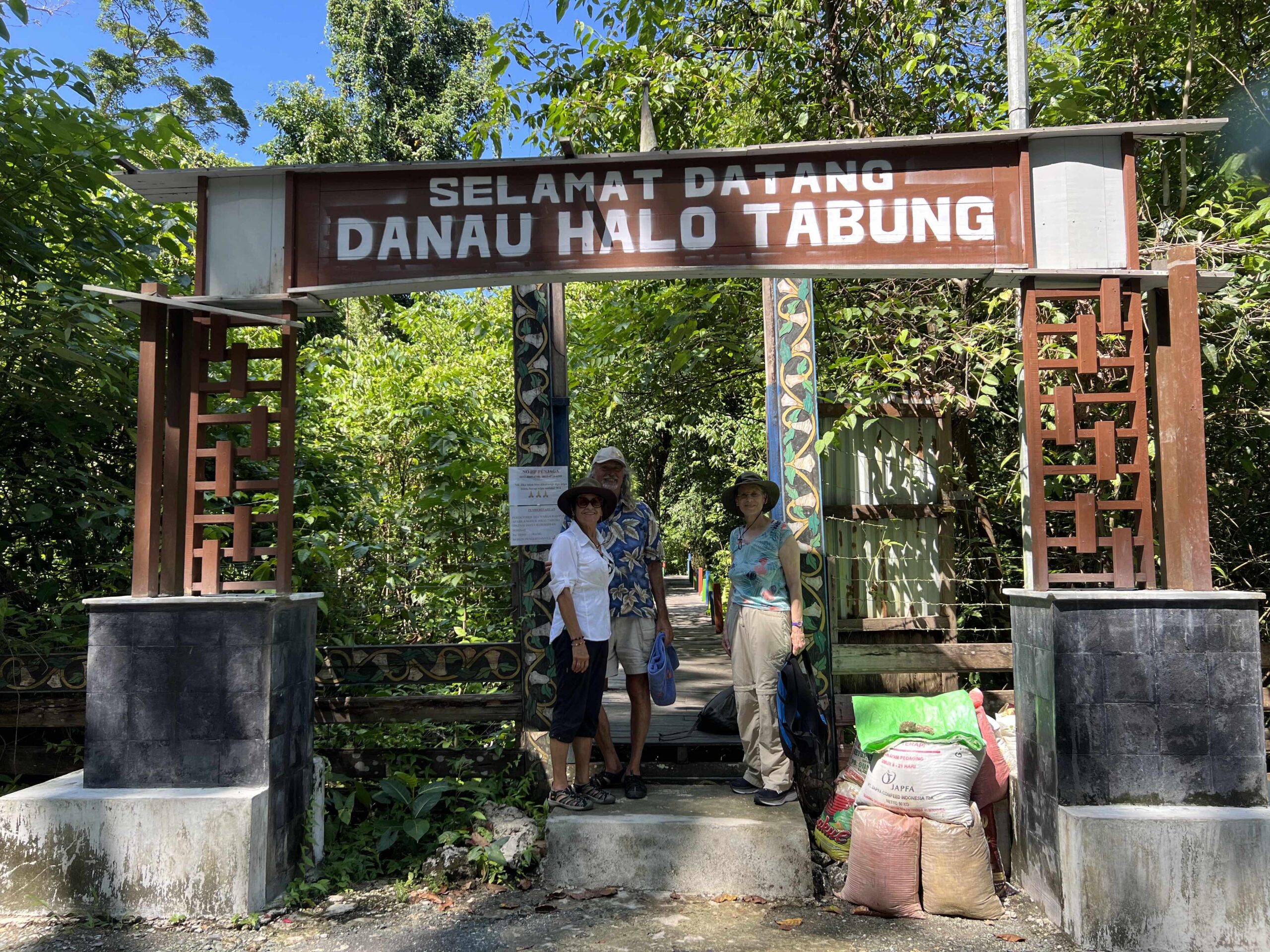
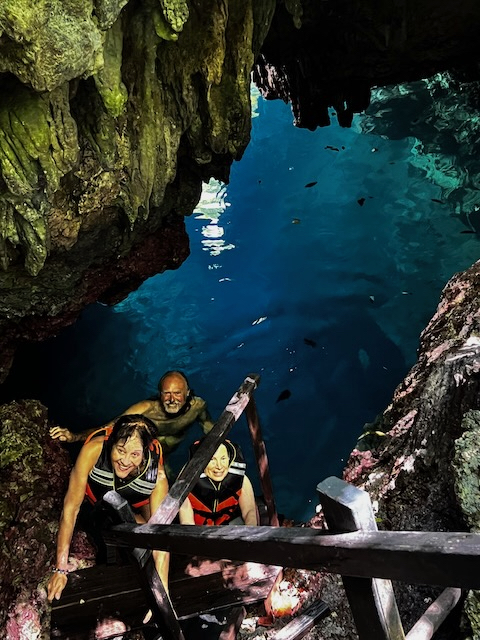
Our day trip to two other islands were not quite as we expected (as nothing is here). The first at Kakaban Island allowed us after climbing up and down wobbly wooden stairs and walkways to reach a beautiful lake of non-stinging jellyfish in which we all snorkeled. We passed a poisonous snake curled on the wooden rail (maybe that is why they don’t have rails anywhere!). In the warm water, we found ourselves surrounded by brown and clear jelly fish from very small to fairly large. Getting out of the water back to the dock was a feat as the choice was very slimy algae-laden uneven rungs of wood in the water and a very big jump up to the dock. The latter perhaps possible for someone who is 25 and works out every day or with someone to haul you out but it did not work for Julie and myself — we got slowly up the slippery rungs. On this same island we also saw several very large monitor lizards and over the side of the dock were irridescent small fish and coral.
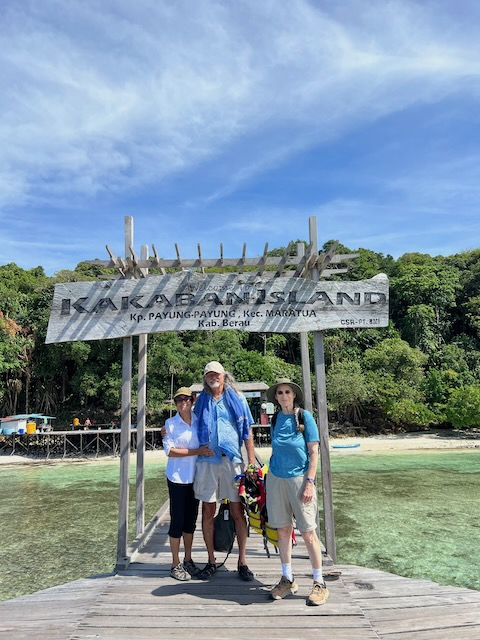
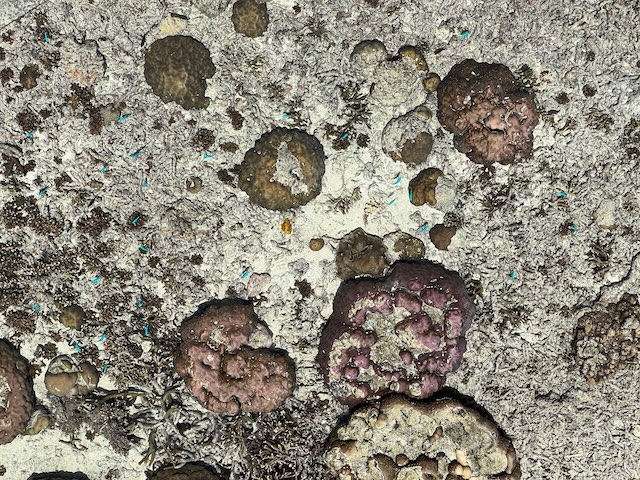
The second island, Sangalaki, is known for a foundation that works to support sea turtles, hatching them and then releasing them at night into the water. We were not alone here. There was a large and noisy gathering from another nearby island — a community party with families all enjoying the day under the trees. We were surprised there was nothing else to do or see on the island given the publicity we had read about it.
And then a another evening sitting outside in a cool breeze and having dinner before bed and preparing for our departure tomorrow back by motor boat to the mainland, then by car to the airport and flight to Balikpappan where I will say goodbye to Julie and Jack who will fly to Bali while I fly to my legal conference in Jakarta.
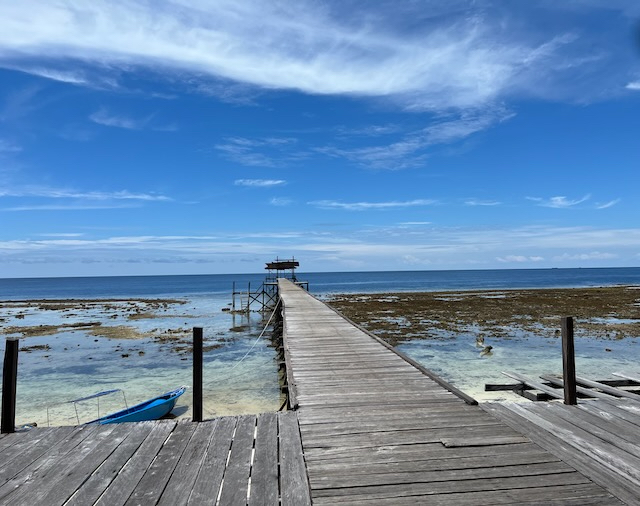
I am ready for a long rest but it will not happen at my conference where I will be with a lot of people I like from all over the world — like a buffet spread of different kinds of delicious foods to enjoy. Tomorrow is another day and the pleasures and vicissitudes of travel.
I will end this Indonesian blog with a few words about my time in Jakarta — a large crowded metropolitan area as different from Kalimantan as — say — Los Angeles to the Big Island of Hawaii. One of the topics of this legal conference is the projected construction and move of the capital from overcrowded and water challenged Jakarta to a newly created space on Kalimantan, about a 2 hours drive from where we were in Balikpappan. The concept is to move about 10% of the Jakarta population, including all national government workers. I spoke to several locals in Kalimantan about this project and although people recognize the economic advantages, a great many people are very concerned what this will mean to their culture, traditions and lifestyle, in addition to the destruction of the ecosystem in the developed area. I expect Kalimantan in a decade will be a very different place.
Until my next journey.
